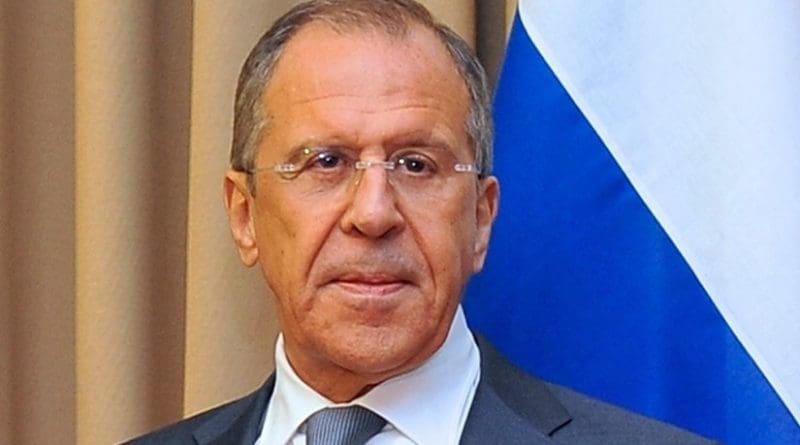Lavrov At The White House – OpEd
The Kremlin would have been thrilled with the happy snaps, but these were, in the end, purely that. History is an assemblage of misguided images and false assumptions. The pictures of the Molotov-Ribbentrop pact of 1939 remain rank, but brilliant for what modern gibberish-driven commentary terms “poor optics”. A pact featuring the signatures of Nazi Germany and Stalin’s Soviet Union made one British official claim that that all “isms” had become “wasms” as a result.
Since political commentators became amateur optometrists, the obsessions with how events are viewed has begun to populate columns. From across the political spectrum, there is a terror that the Trump train has done its next dramatic swerve, defying decades of practice towards old foes. Bad optics!
What should have been noted was the predictability of it all. One on level, the Lavrov-Trump meeting in the White House was dull. On another, it was a relief. Hostility between Russia and the United States has over the years proven to be a cottage industry for academics, specialists and theorists, in time ballooning into an entire industrial complex.
If swords can be made into ploughshares, well and good. Not so, for the optically deranged and suspicious. For a stricken Senator Dick Durbin from the Democrats, “President Trump in these pictures is shaking hands with Russians, and the Kremlin is gleefully tweeting these pictures around the world.”
It was certainly a chance for Lavrov to have a bit of fun, which he duly did to reporters knowing that he would be in the company of a Russian photographer, with an accommodating US President. Given the timing of the visit – a day after the sacking of FBI Director James Comey – Lavrov was thespian-perfect, almost hamming his role. “Was he fired? You’re kidding! You’re kidding!”
To keep him company was the Russian ambassador to the United States, Sergey Kislyak, who has done what few Russian ambassadors have before him: cultivate the Washington social scene, build bridges, and, it might be said, some illusions. There are those who still remember the May 2010 black-tie benefit for the Washington National Opera, whose steep bill was covered by opera benefactor Susan Lehrman.[1]
Naturally, Kislyak’s presence also raised eyebrows amongst the beady-eyed critics. Careers, notably that of Michael T. Flynn, had been ruined after alleged improper associations. An unnamed White House official on CNN’s informer list called it “ridiculous” that “an ambassador can’t meet with the President as part of a visit from a foreign minister. It’s standard practice.”
Lavrov, beaming like a pig in mud, duly had a poke at the idea that Russia had, miraculously, seized control of the White House in a manner befitting the finest conspiracy tales. “I believe that politicians are damaging the political system of the US, trying to pretend that someone is controlling America from the outside.”
Good of him to care, though the political system of the Republic was already well and truly withered before the Kremlin became a convenient alibi, explaining why Mr Trump sprung forth like a nasty Jack in the unnoticed, neglected Box.
The Trump administration should have simply let matters be, but decided to retaliate at the bad mood photos of the meeting generated. The photographer, it transpired, was not only Lavrov’s official photographer, but an employee of the Russian state-run news agency, Tass.
This is proving to be standard form in the Trump administration, largely because theatre, rather than reality, is what is assiduously cultivated. To the outraged go the spoils. “We had an official photographer in the room, as did they,” claimed spokeswoman Sarah Huckabee Sanders on Thursday.
CNN noted the words of an irate White House official, who naturally remained enchantingly anonymous: “They tricked us.” More, it would seem, Kabuki here, the necessary performance in yet another instalment of the chaotic, near illegal mini-series, Trumpistan. “That’s the trouble with the Russians – they lie.”[2]
From another perspective, the Russians may well have simply been living up to expectations. Adding to the drama was speculation that the photographer’s presence, not to mention conduct, might well have constituted a security breach. “Deadly serious Q,” posed former vice-president Joe Biden’s national security advisor Colin Kahl, “Was it a good idea to let a Russian gov photographer & all their equipment into the Oval office?”[3] Former CIA deputy director David S. Cohen did not think so.
Tongues wagged aggressively: those sneaky Russians might well have secreted a listening device into the White House. After all, a listening device was unveiled in a State Department conference room during the Clinton presidency.
And so it goes, the seeds of speculation sown, the trees of doubt grown, and the wonder about what, exactly, is taking place in the White House in its flirt and tug with the Kremlin. In all likelihood, this is the usual much ado about nothing, though that explanation will not satisfy the nostalgic bridges from the Cold War.
Notes:
[1] http://www.esquire.com/news-politics/a54959/forgetting-sergey-kislyak/
[2] http://edition.cnn.com/2017/05/11/politics/oval-office-photos-donald-trump-russians/
[3] https://www.theguardian.com/us-news/2017/may/11/donald-trump-meeting-russia-sergei-lavrov-photos

